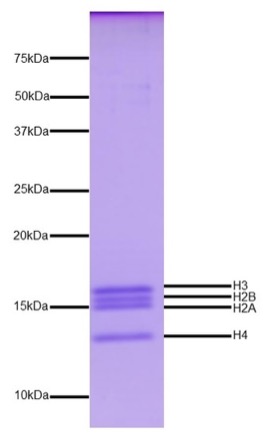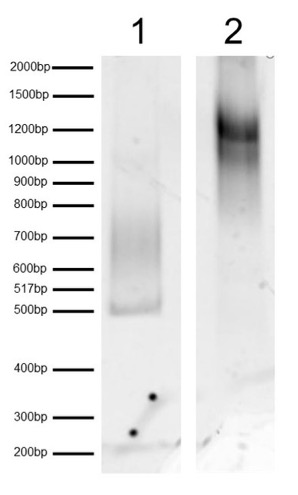
Dinucleosomes, Recombinant Human, Biotinylated
{"url":"https://www.epicypher.com/products/nucleosomes/dinucleosomes-recombinant-human-biotinylated","add_this":[{"service":"facebook","annotation":""},{"service":"email","annotation":""},{"service":"print","annotation":""},{"service":"twitter","annotation":""},{"service":"linkedin","annotation":""}],"gtin":null,"id":928,"bulk_discount_rates":[],"can_purchase":true,"meta_description":"Recombinant dinucleosomes offer a defined substrate for studying oligonucleosome dynamics and multivalent chromatin interactions.","category":["Nucleosomes","Other/IDEA Toolbox"],"AddThisServiceButtonMeta":"","main_image":{"data":"https://cdn11.bigcommerce.com/s-y9o92/images/stencil/{:size}/products/928/1051/toolbox-icon__39934.1661116369.png?c=2","alt":"Dinucleosomes, Recombinant Human, Biotinylated"},"add_to_wishlist_url":"/wishlist.php?action=add&product_id=928","shipping":{"calculated":true},"num_reviews":0,"weight":"0.01 LBS","custom_fields":[{"id":"1132","name":"Pack Size","value":"25 µg"}],"sku":"16-3004","description":"<div class=\"product-general-info\">\n <ul class=\"product-general-info__list-left\">\n <li class=\"product-general-info__list-item\">\n <strong>Species: </strong>Human\n </li>\n <li class=\"product-general-info__list-item\">\n <strong>Source: </strong><em>E. coli</em> & synthetic DNA\n </li>\n </ul>\n <ul class=\"product-general-info__list-right\">\n <li class=\"product-general-info__list-item\">\n <strong>Tag: </strong>Biotinylated\n </li>\n <li class=\"product-general-info__list-item\">\n <strong>Molecular Weight: </strong>490,691 Da\n </li>\n </ul>\n</div>\n\n<div class=\"service_accordion product-droppdown\">\n <div class=\"container\">\n <div id=\"prodAccordion\">\n <div id=\"ProductDescription\" class=\"Block Panel current\">\n <h3 class=\"sub-title1\">Description</h3>\n <div\n class=\"ProductDescriptionContainer product-droppdown__section-description-specific\"\n >\n <p>\n Products in EpiCypher’s IDEA Toolbox (Innovation and Discovery of\n Epigenetic Applications) offer access to reagents without known or\n fully defined uses, enabling researchers to explore cutting-edge\n applications. Due to their novelty and unexplored potential,\n EpiCypher will engage in limited technical support.\n </p>\n <p>\n Dinucleosomes are comprised of two recombinant octamers (each\n containing two copies of histone proteins H2A, H2B, H3.1, and H4)\n positioned on a single, 442 base pair DNA template. Mononucleosomes\n are the basic repeating unit of chromatin; however, a dinucleosome\n substrate enables studying longer range chromatin interactions. The\n DNA contains two 601 positioning sequences (underlined, below)\n separated by a 60 base pair linker and a 5’ biotin-TEG group. The\n 601 sequence, identified by Lowary & Widom [1], has high affinity\n for histone octamers and is useful for nucleosome assembly.\n </p>\n </div>\n </div>\n </div>\n <div id=\"prodAccordion\">\n <div id=\"ProductDescription\" class=\"Block Panel current\">\n <h3 class=\"sub-title1\">Validation Data</h3>\n <div\n class=\"ProductDescriptionContainer product-droppdown__section-description-specific\"\n >\n <section class=\"image-picker\">\n <div class=\"image-picker__left\">\n <div\n class=\"image-picker__main-content_active image-picker__main-content\"\n >\n <div class=\"image-picker__header-content\">\n <button class=\"image-picker__left-arrow\">\n <svg\n class=\"image-picker__svg-left\"\n width=\"24\"\n height=\"24\"\n viewBox=\"0 0 24 24\"\n >\n <path\n d=\"M16.67 0l2.83 2.829-9.339 9.175 9.339 9.167-2.83 2.829-12.17-11.996z\"\n />\n </svg>\n </button>\n <a\n href=\"/content/images/products/nucleosomes/16-3004-protein-gel-data.jpeg\"\n target=\"_blank\"\n class=\"image-picker__main-image-link\"\n ><img\n alt=\"16-3004-protein-gel-data\"\n src=\"/content/images/products/nucleosomes/16-3004-protein-gel-data.jpeg\"\n class=\"image-picker__main-image\"\n />\n <span class=\"image-picker__main-image-caption\"\n >(Click to enlarge)</span\n ></a\n >\n <button class=\"image-picker__right-arrow\">\n <svg\n class=\"image-picker__svg-right\"\n width=\"24\"\n height=\"24\"\n viewBox=\"0 0 24 24\"\n >\n <path\n d=\"M7.33 24l-2.83-2.829 9.339-9.175-9.339-9.167 2.83-2.829 12.17 11.996z\"\n />\n </svg>\n </button>\n </div>\n <p>\n <span class=\"image-picker__span-content\"\n ><strong>Figure 1: Protein gel data </strong><br />\n Coomassie stained SDS-PAGE gel of proteins in Dinucleosomes\n (1 µg) demonstrates the purity of histones in the\n preparation. Sizes of molecular weight markers and positions\n of the core histones (H2A, H2B, H3 and H4) are indicated.\n </span>\n </p>\n </div>\n <div class=\"image-picker__main-content\">\n <div class=\"image-picker__header-content\">\n <button class=\"image-picker__left-arrow\">\n <svg\n class=\"image-picker__svg-left\"\n width=\"24\"\n height=\"24\"\n viewBox=\"0 0 24 24\"\n >\n <path\n d=\"M16.67 0l2.83 2.829-9.339 9.175 9.339 9.167-2.83 2.829-12.17-11.996z\"\n />\n </svg>\n </button>\n <a\n href=\"/content/images/products/nucleosomes/16-3004-dna-gel-data.jpeg\"\n target=\"_blank\"\n class=\"image-picker__main-image-link\"\n ><img\n alt=\"16-3004-dna-gel-data\"\n src=\"/content/images/products/nucleosomes/16-3004-dna-gel-data.jpeg\"\n class=\"image-picker__main-image\"\n />\n <span class=\"image-picker__main-image-caption\"\n >(Click to enlarge)</span\n ></a\n >\n <button class=\"image-picker__right-arrow\">\n <svg\n class=\"image-picker__svg-right\"\n width=\"24\"\n height=\"24\"\n viewBox=\"0 0 24 24\"\n >\n <path\n d=\"M7.33 24l-2.83-2.829 9.339-9.175-9.339-9.167 2.83-2.829 12.17 11.996z\"\n />\n </svg>\n </button>\n </div>\n <p>\n <span class=\"image-picker__span-content\"\n ><strong>Figure 2: DNA gel data </strong><br />\n Dinucleosomes resolved via native PAGE and stained with\n ethidium bromide to visualize DNA. <strong>Lane 1</strong>:\n Free DNA (100 ng). <strong>Lane 2</strong>: Intact\n dinucleosomes (400 ng).\n </span>\n </p>\n </div>\n </div>\n <aside class=\"image-picker__right\">\n <div class=\"image-picker__gallery\">\n <img\n alt=\"16-3004-protein-gel-data\"\n src=\"/content/images/products/nucleosomes/16-3004-protein-gel-data.jpeg\"\n width=\"200\"\n class=\"image-picker__side-image image-picker__side-image_active\"\n role=\"button\"\n />\n <img\n alt=\"16-3004-dna-gel-data\"\n src=\"/content/images/products/nucleosomes/16-3004-dna-gel-data.jpeg\"\n width=\"200\"\n class=\"image-picker__side-image image-picker__side-image_active\"\n role=\"button\"\n />\n </div>\n </aside>\n </section>\n </div>\n </div>\n </div>\n <div id=\"prodAccordion\">\n <div id=\"ProductDescription\" class=\"Block Panel\">\n <h3 class=\"sub-title1\">Technical Information</h3>\n <div\n class=\"ProductDescriptionContainer product-droppdown__section-description\"\n >\n <div class=\"product-tech-info\">\n <div class=\"product-tech-info__line-item\">\n <div class=\"product-tech-info__line-item-left\">\n <b>Storage</b>\n </div>\n <div class=\"product-tech-info__line-item-right\">\n Stable for six months at -80°C from date of receipt. For best\n results, aliquot and avoid freeze/thaws.\n </div>\n </div>\n <div class=\"product-tech-info__line-item\">\n <div class=\"product-tech-info__line-item-left\">\n <b>Formulation</b>\n </div>\n <div class=\"product-tech-info__line-item-right\">\n 10 mM Tris pH 7.5, 25 mM NaCl, 1 mM EDTA, 2 mM DTT, 20% glycerol\n (11.1 µg protein, 25 µg DNA + protein)\n </div>\n </div>\n </div>\n </div>\n </div>\n </div>\n <div id=\"prodAccordion\">\n <div id=\"ProductDescription\" class=\"Block Panel\">\n <h3 class=\"sub-title1\">Application Notes</h3>\n <div\n class=\"ProductDescriptionContainer product-droppdown__section-description\"\n >\n <p>\n Dinucleosomes are highly purified and suitable for a variety of\n applications, including use as a substrate in enzyme assays,\n high-throughput screening and inhibitor testing, chromatin binding\n studies, protein-protein interaction assays, structural studies, and\n in effector protein binding experiments.\n </p>\n </div>\n </div>\n </div>\n <div id=\"prodAccordion\">\n <div id=\"ProductDescription\" class=\"Block Panel\">\n <h3 class=\"sub-title1\">DNA Sequence</h3>\n <div\n class=\"ProductDescriptionContainer product-droppdown__section-description\"\n >\n <p style=\"line-break: anywhere\">\n 5’Biotin-TEG-GCCAGTGCCAAGCTTACTAGATATCGGACCCTATACGCGGCCGCC<u\n >CTGGAGAATCCCGGTGCCGAGGCCGCTCAATTGGTCGTAGCAAGCTCTAGCACCGCTTAAACGCACGTACGCGCTGTCCCCCGCGTTTTAACCGCCAAGGGGATTACTC\n CCTAGTCTCCAGGCACGTGTCAGATATATACATCCTGT</u\n >GCATGTGGATCCGAATTCATATTAATTAATACTAGATATCGGACCCTATACGCGGCCGCC<u>CTGGAGAATCCCGGTGCCGAGGCCGCTCAATTGGTCGTAGCAAGCTCTAGCACCGCTTAAACGCACGTACGCGCTGTCCCCCGCGTTTTAACCGCCAAGGGGATTACTCCCTAGTCTCCAGGCACGTGTCAGATATATACATCCTGT</u>GCATGTGGATCCGAATTCATATTAATTAATGGTACCGAGCTCG-3’\n </p>\n </div>\n </div>\n </div>\n <div id=\"prodAccordion\">\n <div id=\"ProductDescription\" class=\"Block Panel\">\n <h3 class=\"sub-title1\">Gene & Protein Information</h3>\n <div\n class=\"ProductDescriptionContainer product-droppdown__section-description\"\n >\n <div class=\"product-tech-info\">\n <div class=\"product-tech-info__line-item\">\n <div class=\"product-tech-info__line-item-left\">\n <b>UniProt ID</b>\n </div>\n <div class=\"product-tech-info__line-item-right\">\n <p style=\"margin-bottom: 0\">\n H2A - P04908 (alt. names: H2A type 1-B/E, H2A.2, H2A/a, H2A/m)\n </p>\n <p style=\"margin-bottom: 0\">\n H2B - O60814 (alt. names: H2B K, HIRA-interacting protein 1)\n </p>\n <p style=\"margin-bottom: 0\">\n H3.1 - P68431 (alt. names: H3, H3/a, H3/b, H3/c, H3/d)\n </p>\n <p>H4 - P62805</p>\n </div>\n </div>\n </div>\n </div>\n </div>\n </div>\n <div id=\"prodAccordion\">\n <div id=\"ProductDescription\" class=\"Block Panel\">\n <h3 class=\"sub-title1\">References</h3>\n <div\n class=\"ProductDescriptionContainer product-droppdown__section-description\"\n >\n <strong>Background References:</strong>\n <br />\n [1] Lowary & Widom <em>J. Mol. Biol.</em> (1998). PMID:\n <a\n href=\"https://pubmed.ncbi.nlm.nih.gov/9514715/\"\n title=\"New DNA sequence rules for high affinity binding to histone octamer and sequence-directed nucleosome positioning\"\n target=\"new\"\n >\n 9514715</a\n ><br />\n </div>\n </div>\n </div>\n <div id=\"prodAccordion\">\n <div id=\"ProductDescription\" class=\"Block Panel\">\n <h3 class=\"sub-title1\">Documents & Resources</h3>\n <div\n class=\"ProductDescriptionContainer product-droppdown__section-description\"\n >\n <div class=\"product-documents\">\n <a\n href=\"/content/documents/tds/16-3004.pdf\"\n target=\"_blank\"\n class=\"product-documents__link\"\n >\n <svg\n version=\"1.1\"\n id=\"Layer_1\"\n xmlns=\"http://www.w3.org/2000/svg\"\n xmlns:xlink=\"http://www.w3.org/1999/xlink\"\n x=\"0px\"\n y=\"0px\"\n viewBox=\"0 0 228 240\"\n style=\"enable-background: new 0 0 228 240\"\n xml:space=\"preserve\"\n class=\"product-documents__icon\"\n alt=\"16-0030 Datasheet\"\n >\n <g>\n <path\n class=\"product-documents__svg-pdf\"\n d=\"M191.92,68.77l-47.69-47.69c-1.33-1.33-3.12-2.08-5.01-2.08H45.09C41.17,19,38,22.17,38,26.09v184.36\n c0,3.92,3.17,7.09,7.09,7.09h141.82c3.92,0,7.09-3.17,7.09-7.09V73.8C194,71.92,193.25,70.1,191.92,68.77z M177.65,77.06h-41.7\n v-41.7L177.65,77.06z M178.05,201.59H53.95V34.95h66.92v47.86c0,5.14,4.17,9.31,9.31,9.31h47.86V201.59z\"\n />\n </g>\n <rect\n x=\"20\"\n y=\"112\"\n class=\"product-documents__svg-background\"\n width=\"146\"\n height=\"76\"\n />\n <g>\n <path\n class=\"product-documents__svg-pdf\"\n d=\"M23.83,125.68h22.36c5.29,0,9.41,1.33,12.35,4c2.94,2.67,4.42,6.39,4.42,11.18c0,4.78-1.47,8.51-4.42,11.18\n c-2.94,2.67-7.06,4-12.35,4H34.59v18.29H23.83V125.68z M44.81,147.9c5.38,0,8.07-2.32,8.07-6.97c0-2.39-0.67-4.16-2-5.31\n c-1.33-1.15-3.36-1.73-6.07-1.73H34.59v14.01H44.81z\"\n />\n <path\n class=\"product-documents__svg-pdf\"\n d=\"M69.92,125.68h18.91c5.29,0,9.84,0.97,13.66,2.9c3.82,1.93,6.74,4.72,8.76,8.35\n c2.02,3.63,3.04,7.98,3.04,13.04c0,5.06-1,9.42-3,13.08c-2,3.66-4.91,6.45-8.73,8.38c-3.82,1.93-8.4,2.9-13.73,2.9H69.92V125.68z\n M88.07,165.63c10.35,0,15.52-5.22,15.52-15.66c0-10.4-5.17-15.59-15.52-15.59h-7.38v31.26H88.07z\"\n />\n <path\n class=\"product-documents__svg-pdf\"\n d=\"M122.57,125.68h32.84v8.49h-22.22v11.18h20.84v8.49h-20.84v20.49h-10.63V125.68z\"\n />\n </g>\n </svg>\n <span class=\"product-documents__info\">Technical Datasheet</span>\n </a>\n </div>\n </div>\n </div>\n </div>\n </div>\n</div>\n","tags":[],"warranty":"","price":{"without_tax":{"formatted":"$425.00","value":425,"currency":"USD"},"tax_label":"Sales Tax"},"detail_messages":"","availability":"","page_title":"Recombinant Dinucleosomes ","cart_url":"https://www.epicypher.com/cart.php","max_purchase_quantity":0,"mpn":null,"upc":null,"options":[],"related_products":[{"id":929,"sku":"16-3104","name":"Dinucleosomes, Recombinant Human, Non-Biotinylated","url":"https://www.epicypher.com/products/nucleosomes/dinucleosomes-recombinant-human-non-biotinylated","availability":"","rating":null,"brand":{"name":null},"category":["Nucleosomes","Other/IDEA Toolbox"],"summary":"\n \n \n Species: Human\n \n \n Source: E. coli & synthetic DNA\n \n \n \n ","image":{"data":"https://cdn11.bigcommerce.com/s-y9o92/images/stencil/{:size}/products/929/1050/toolbox-icon__84455.1661116330.png?c=2","alt":"Dinucleosomes, Recombinant Human, Non-Biotinylated"},"images":[{"data":"https://cdn11.bigcommerce.com/s-y9o92/images/stencil/{:size}/products/929/1050/toolbox-icon__84455.1661116330.png?c=2","alt":"Dinucleosomes, Recombinant Human, Non-Biotinylated"}],"date_added":"1st Aug 2022","pre_order":false,"show_cart_action":true,"has_options":false,"stock_level":null,"low_stock_level":null,"qty_in_cart":0,"custom_fields":[{"id":1133,"name":"Pack Size","value":"25 µg"}],"num_reviews":null,"weight":{"formatted":"0.01 LBS","value":0.01},"demo":false,"add_to_cart_url":"https://www.epicypher.com/cart.php?action=add&product_id=929","price":{"without_tax":{"currency":"USD","formatted":"$425.00","value":425},"tax_label":"Sales Tax"},"add_to_wishlist_url":"/wishlist.php?action=add&product_id=929"},{"id":84,"sku":"16-0006","name":"Mononucleosomes, Recombinant Human Biotinylated","url":"https://www.epicypher.com/products/nucleosomes/mononucleosomes-recombinant-human-biotinylated","availability":"","rating":null,"brand":{"name":null},"category":["Nucleosomes","Nucleosomes/Recombinant Nucleosomes (rNucs)"],"summary":"\n \n \n \n Description\n \n \n Mononucleosomes ","image":{"data":"https://cdn11.bigcommerce.com/s-y9o92/images/stencil/{:size}/products/84/331/Human_recombinant_nucleosome__14471.1516390310.gif?c=2","alt":"Mononucleosomes, Recombinant Human Biotinylated"},"images":[{"data":"https://cdn11.bigcommerce.com/s-y9o92/images/stencil/{:size}/products/84/331/Human_recombinant_nucleosome__14471.1516390310.gif?c=2","alt":"Mononucleosomes, Recombinant Human Biotinylated"}],"date_added":"3rd Dec 2014","pre_order":false,"show_cart_action":true,"has_options":false,"stock_level":null,"low_stock_level":null,"qty_in_cart":0,"custom_fields":[{"id":1251,"name":"Pack Size","value":"50 μg"},{"id":1252,"name":"Internal Comment","value":"Has Bulk - Not Included in Amount"},{"id":1253,"name":"Internal Comment","value":"65 extra units located bottom-right of Psylocke"}],"num_reviews":null,"weight":{"formatted":"0.01 LBS","value":0.01},"demo":false,"add_to_cart_url":"https://www.epicypher.com/cart.php?action=add&product_id=84","price":{"without_tax":{"currency":"USD","formatted":"$475.00","value":475},"tax_label":"Sales Tax"},"add_to_wishlist_url":"/wishlist.php?action=add&product_id=84"},{"id":498,"sku":"16-0344","name":"Mononucleosomes (H3.3K36M), Recombinant Human Biotinylated","url":"https://www.epicypher.com/products/nucleosomes/mutant-nucleosomes/mononucleosomes-h3-3k36m-recombinant-human-biotinylated","availability":"","rating":null,"brand":{"name":null},"category":["Nucleosomes/Mutant Nucleosomes","Nucleosomes/Mutant Nucleosomes/Oncogenic Nucleosomes (oncoNucs)"],"summary":" \n","image":{"data":"https://cdn11.bigcommerce.com/s-y9o92/images/stencil/{:size}/products/498/287/oncoNuc__73018.1569012500.gif?c=2","alt":"Mononucleosomes (H3.3K36M), Recombinant Human Biotinylated"},"images":[{"data":"https://cdn11.bigcommerce.com/s-y9o92/images/stencil/{:size}/products/498/287/oncoNuc__73018.1569012500.gif?c=2","alt":"Mononucleosomes (H3.3K36M), Recombinant Human Biotinylated"}],"date_added":"31st Oct 2017","pre_order":false,"show_cart_action":true,"has_options":false,"stock_level":null,"low_stock_level":null,"qty_in_cart":0,"custom_fields":[{"id":242,"name":"Pack Size","value":"50 μg"}],"num_reviews":null,"weight":{"formatted":"0.01 LBS","value":0.01},"demo":false,"add_to_cart_url":"https://www.epicypher.com/cart.php?action=add&product_id=498","price":{"without_tax":{"currency":"USD","formatted":"$475.00","value":475},"tax_label":"Sales Tax"},"add_to_wishlist_url":"/wishlist.php?action=add&product_id=498"},{"id":500,"sku":"16-0350","name":"Mononucleosomes (H3.3K9M), Recombinant Human Biotinylated","url":"https://www.epicypher.com/products/nucleosomes/mononucleosomes-h3-3k9m-recombinant-human-biotinylated","availability":"","rating":null,"brand":{"name":null},"category":["Nucleosomes","Nucleosomes/Mutant Nucleosomes","Nucleosomes/Mutant Nucleosomes/Oncogenic Nucleosomes (oncoNucs)"],"summary":" \n","image":{"data":"https://cdn11.bigcommerce.com/s-y9o92/images/stencil/{:size}/products/500/284/oncoNuc__48975.1569012494.gif?c=2","alt":"Mononucleosomes (H3.3K9M), Recombinant Human Biotinylated"},"images":[{"data":"https://cdn11.bigcommerce.com/s-y9o92/images/stencil/{:size}/products/500/284/oncoNuc__48975.1569012494.gif?c=2","alt":"Mononucleosomes (H3.3K9M), Recombinant Human Biotinylated"}],"date_added":"1st Nov 2017","pre_order":false,"show_cart_action":true,"has_options":false,"stock_level":null,"low_stock_level":null,"qty_in_cart":0,"custom_fields":[{"id":792,"name":"Pack Size","value":"50 μg"}],"num_reviews":null,"weight":{"formatted":"0.01 LBS","value":0.01},"demo":false,"add_to_cart_url":"https://www.epicypher.com/cart.php?action=add&product_id=500","price":{"without_tax":{"currency":"USD","formatted":"$475.00","value":475},"tax_label":"Sales Tax"},"add_to_wishlist_url":"/wishlist.php?action=add&product_id=500"},{"id":249,"sku":"16-0011","name":"Mononucleosomes (H3.3), Human Recombinant Biotinylated","url":"https://www.epicypher.com/products/nucleosomes/mononucleosomes-h3-3-human-recombinant-biotinylated","availability":"","rating":null,"brand":{"name":null},"category":["Nucleosomes","Nucleosomes/Recombinant Nucleosomes (rNucs)","Nucleosomes/Variant Nucleosomes (vNucs)"],"summary":" Mononucleosomes (H3.3), Human Recombinant Biotinylated Description: ","image":{"data":"https://cdn11.bigcommerce.com/s-y9o92/images/stencil/{:size}/products/249/329/Histone_variant_nucleosome__25014.1516390310.gif?c=2","alt":"Mononucleosomes (H3.3), Human Recombinant Biotinylated"},"images":[{"data":"https://cdn11.bigcommerce.com/s-y9o92/images/stencil/{:size}/products/249/329/Histone_variant_nucleosome__25014.1516390310.gif?c=2","alt":"Mononucleosomes (H3.3), Human Recombinant Biotinylated"}],"date_added":"26th Oct 2015","pre_order":false,"show_cart_action":true,"has_options":false,"stock_level":null,"low_stock_level":null,"qty_in_cart":0,"custom_fields":[{"id":762,"name":"Pack Size","value":"50 μg"},{"id":763,"name":"Internal Comment","value":"Has Bulk - Not Included in Amount"}],"num_reviews":null,"weight":{"formatted":"0.01 LBS","value":0.01},"demo":false,"add_to_cart_url":"https://www.epicypher.com/cart.php?action=add&product_id=249","price":{"without_tax":{"currency":"USD","formatted":"$475.00","value":475},"tax_label":"Sales Tax"},"add_to_wishlist_url":"/wishlist.php?action=add&product_id=249"}],"shipping_messages":[],"rating":0,"meta_keywords":"dinucleosomes, recombinant nucleosome, human nucleosome, oligonucleosome, polynucleosome, chromatin valency, nucleosome valency","show_quantity_input":1,"title":"Dinucleosomes, Recombinant Human, Biotinylated","gift_wrapping_available":false,"min_purchase_quantity":0,"customizations":[],"images":[{"data":"https://cdn11.bigcommerce.com/s-y9o92/images/stencil/{:size}/products/928/1051/toolbox-icon__39934.1661116369.png?c=2","alt":"Dinucleosomes, Recombinant Human, Biotinylated"}]} Pack Size: 25 µg
- Species: Human
- Source: E. coli & synthetic DNA
- Tag: Biotinylated
- Molecular Weight: 490,691 Da
Description
Products in EpiCypher’s IDEA Toolbox (Innovation and Discovery of Epigenetic Applications) offer access to reagents without known or fully defined uses, enabling researchers to explore cutting-edge applications. Due to their novelty and unexplored potential, EpiCypher will engage in limited technical support.
Dinucleosomes are comprised of two recombinant octamers (each containing two copies of histone proteins H2A, H2B, H3.1, and H4) positioned on a single, 442 base pair DNA template. Mononucleosomes are the basic repeating unit of chromatin; however, a dinucleosome substrate enables studying longer range chromatin interactions. The DNA contains two 601 positioning sequences (underlined, below) separated by a 60 base pair linker and a 5’ biotin-TEG group. The 601 sequence, identified by Lowary & Widom [1], has high affinity for histone octamers and is useful for nucleosome assembly.
Validation Data
Figure 1: Protein gel data
Coomassie stained SDS-PAGE gel of proteins in Dinucleosomes
(1 µg) demonstrates the purity of histones in the
preparation. Sizes of molecular weight markers and positions
of the core histones (H2A, H2B, H3 and H4) are indicated.
Figure 2: DNA gel data
Dinucleosomes resolved via native PAGE and stained with
ethidium bromide to visualize DNA. Lane 1:
Free DNA (100 ng). Lane 2: Intact
dinucleosomes (400 ng).
Technical Information
Application Notes
Dinucleosomes are highly purified and suitable for a variety of applications, including use as a substrate in enzyme assays, high-throughput screening and inhibitor testing, chromatin binding studies, protein-protein interaction assays, structural studies, and in effector protein binding experiments.
DNA Sequence
5’Biotin-TEG-GCCAGTGCCAAGCTTACTAGATATCGGACCCTATACGCGGCCGCCCTGGAGAATCCCGGTGCCGAGGCCGCTCAATTGGTCGTAGCAAGCTCTAGCACCGCTTAAACGCACGTACGCGCTGTCCCCCGCGTTTTAACCGCCAAGGGGATTACTC CCTAGTCTCCAGGCACGTGTCAGATATATACATCCTGTGCATGTGGATCCGAATTCATATTAATTAATACTAGATATCGGACCCTATACGCGGCCGCCCTGGAGAATCCCGGTGCCGAGGCCGCTCAATTGGTCGTAGCAAGCTCTAGCACCGCTTAAACGCACGTACGCGCTGTCCCCCGCGTTTTAACCGCCAAGGGGATTACTCCCTAGTCTCCAGGCACGTGTCAGATATATACATCCTGTGCATGTGGATCCGAATTCATATTAATTAATGGTACCGAGCTCG-3’
Gene & Protein Information
H2A - P04908 (alt. names: H2A type 1-B/E, H2A.2, H2A/a, H2A/m)
H2B - O60814 (alt. names: H2B K, HIRA-interacting protein 1)
H3.1 - P68431 (alt. names: H3, H3/a, H3/b, H3/c, H3/d)
H4 - P62805






